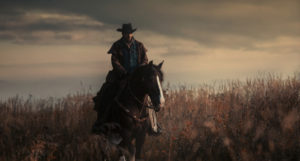Genre Spotlight: Historical Fiction
Historical fiction novels are arguably the closest thing we have to time travel. They can transport you to the old West where you’ll get in bar fights with cowboys. Or take you to the roaring twenties where you’ll attend a party in a flapper dress. They can even transport you to Georgian Society where you’ll live out the plot of a Jane Austen novel. Our entire expansive history becomes yours to navigate and explore. However, there are certain technicalities that are crucial when transporting your readers to the past:

Do Sweat the Small Stuff
Possibly the most important and complicated aspect of writing historical fiction is accuracy. You’re writing is set in a time that is tangible to us through history books and research. This means, unlike other forms of fiction where you have the freedom to improvise, you have to really stick to the facts. While there is still some room to be creative, when it comes to things like setting, clothing, items in use, etc.- you need to be incredibly accurate. In this genre, nothing will make a reader lose confidence in you quicker than if they spot historical inaccuracies.
Obviously, avoiding these mistakes involves conducting an immense amount of research- arguably more so than any other form of fiction. You want your readers to be able to see, smell, taste, hear and touch a time that has actually existed for us. You want to convey not only what that time looked like, but what the people were like, what they did for fun, and what their opinions were. We recommend not only conducting thorough research on your own but also working with experts on the topic you’re writing about. They may be able to pick up on some inaccuracies you may have missed so you can avoid potential reader backlash post-publication.

Don’t Go Overboard
While it’s important that you avoid inaccuracies and do the necessary research…don’t go overboard. Historical fiction writers tend to make the mistake of going too far in the opposite direction, including minute details on household items and wallpaper. Though you should always do your research, the last thing you want to do is bore your readers with a bunch of specific details just for the sake of showing your research skills. Include details- yes. But make sure you don’t focus too much on details that don’t pertain to your story. It’s a balancing act.
Stay True to Historical Figures
Often historical fiction or western novels will include characters based on real-life historical figures. If that is the case for you, make sure you’re staying true to the historical figures they’re based on. Historical fiction writers tend to make the mistake of pushing their own political or moral thoughts onto these people. You must remember that the figure you’re writing about is a person from that time- not ours. Allow them to be bigoted or politically backward or wrong. Don’t attempt to change them or have them make amends or make them forward thinking if they weren’t. Even great figures are allowed to be flawed and your readers will thank you for writing them with accuracy.

Pace Yourself Properly
This goes along with what we said earlier about not including too much detail. Historical fiction writers often make the mistake of getting too bogged down with exposition at the beginning of the novel. Your reader doesn’t need to understand everything about the era and your character’s place in the world right away. Pepper your relevant exposition throughout your novel as the information becomes relevant to your character and how they’re operating in the world.
Are you ready to publish your book? Contact us today!
